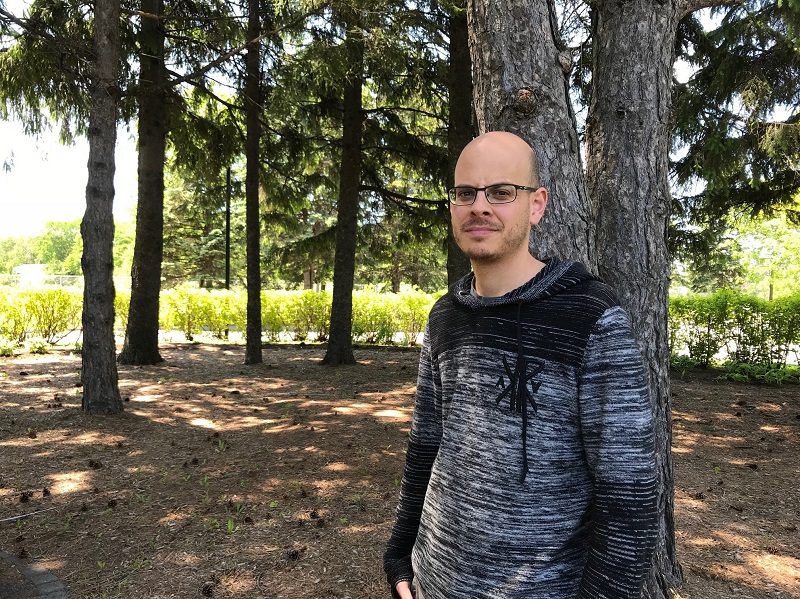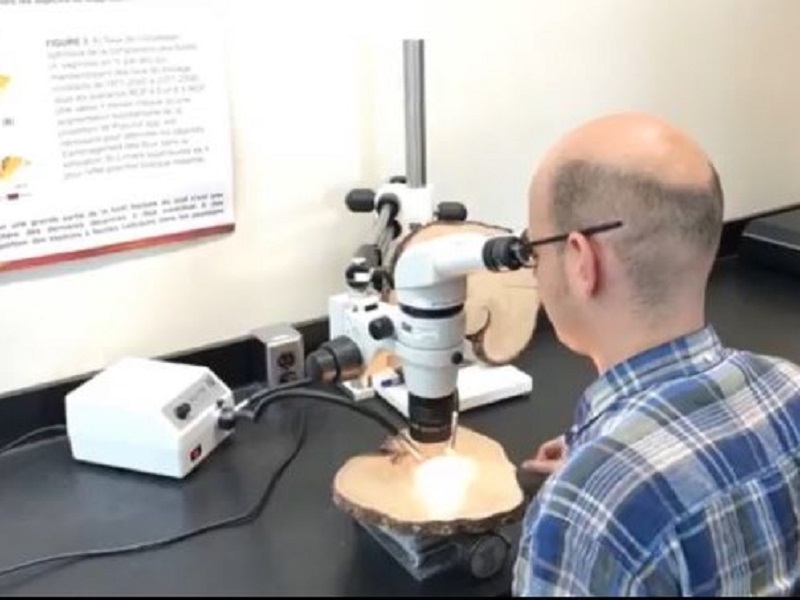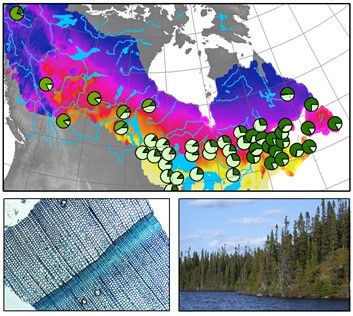A new tree-ring study suggests that introducing resilient tree genotypes could help forests stay healthy and even balance greenhouse gases in our atmosphere — but there’s a catch.
April 2021
When it comes to reducing the effects of climate change, well-managed trees and forests offer hope. Often regarded as the “lungs” of our planet, trees capture carbon from the atmosphere through photosynthesis and then release it when forests burn down or decay. This natural cycle helps to balance the amounts of carbon, and greenhouse gases, in Earth’s complex atmosphere.
Carbon sink: A forest acts as a carbon sink if it absorbs more carbon from the atmosphere than it releases. Carbon source: A forest acts as a carbon source if it releases more carbon than it absorbs. This process of capturing and storing carbon is called carbon sequestration.
Ask questions first
But what happens when climate change throws off that balance — like when more intense and more frequent periods of drought lead to declining tree growth and stressed forests? Could introducing preadapted genotypes selected from more resilient populations help them thrive? This type of intervention is called assisted gene flow, and a new tree-ring study by Martin Girardin and his colleagues at Laurentian Forestry Centre–Quebec set out to find some answers.
“There is an urgency to this work,” says Martin. “Especially considering Natural Resources Canada scientists estimate that forest productivity will decrease by the end of the century in extensive parts of boreal Canada due to maladaptation to climate change. The time to work out how trees can help balance our planet is now.”
Calls for a different kind of tree-ring study
Martin decided to take a different approach. Instead of peering thousands of years into the past, as many traditional tree-ring studies do, his team brought together old and new tools to understand how tree populations are adapting to climate change. In the process, they laid the foundation for a new approach to managing forests.


.jpg)

To get to the root of things, Martin and his colleagues examined 51,029 tree rings from 1,560 black spruce trees growing since 1974 in two Quebec transplant experimental sites. The source trees came from 46 locations across Canada. Watch: Every tree has a story to tell
Taking advantage of nature’s differences
The objective was to investigate whether assisted gene flow can result in an overall increase in carbon capture. There are subtle genetic differences among tree species populations, and these differences result in varying growth and mortality rates.
“Can we take advantage of these differences to increase carbon capturing?” asks Martin. “And if yes, which populations should we chose from the hundreds that exist across the extent of a species’ distribution?”
By looking at previous inventories of tree height, mortality and density, researchers were able to analyze tree-rings to calculate annual biomass increments and carbon capture. The results were surprising.
Here’s the catch
“What the new research tells us is, Yes, if we do introduce preadapted genotypes in reforestation efforts, there’s a benefit in terms of carbon capture,” he says. “But here’s the catch: it’s true for only about 15 years.”
It turns out that tree populations that were highly productive when young lost that advantage as they matured, sometimes even ending up among the least productive. Whereas populations that were low producers at the start often became more productive as they matured.
Martin explains: “There are many variables at play, including the genetic makeup of trees, and one can cancel out, or dilute the other. In other words, growth, wood density and survival rate all co-exist, and if one is thrown off balance, they’re all off balance.”

Researchers studied tree rings from black spruce transplanted to Quebec experimental forests from several Canadian locations. Source: Martin P. Girardin, Danny Rioux, Martine Blais, and Louis De Grandpré.
Looking ahead
Through this research, Martin and his colleagues were able to answer some important questions. For instance, they discovered that while the benefit of introducing resilient genotypes isn’t long-lasting, this approach could indeed help a forest transition from carbon source to carbon sink faster after a disturbance like a wildfire.
However, simply moving one source population to another planting location without knowing their genetic makeup isn’t enough. As this research clearly demonstrates, further studies on this question will require long-term monitoring of the transplant experiments.
For more information:
Read:
For the complete study: Nature Communications
A changing climate will affect Canada’s forests in a range of complex ways
Explore:
Learn more about Martin Girardin’s research on ResearchGate
Forest Carbon
Frequently asked questions about climate change